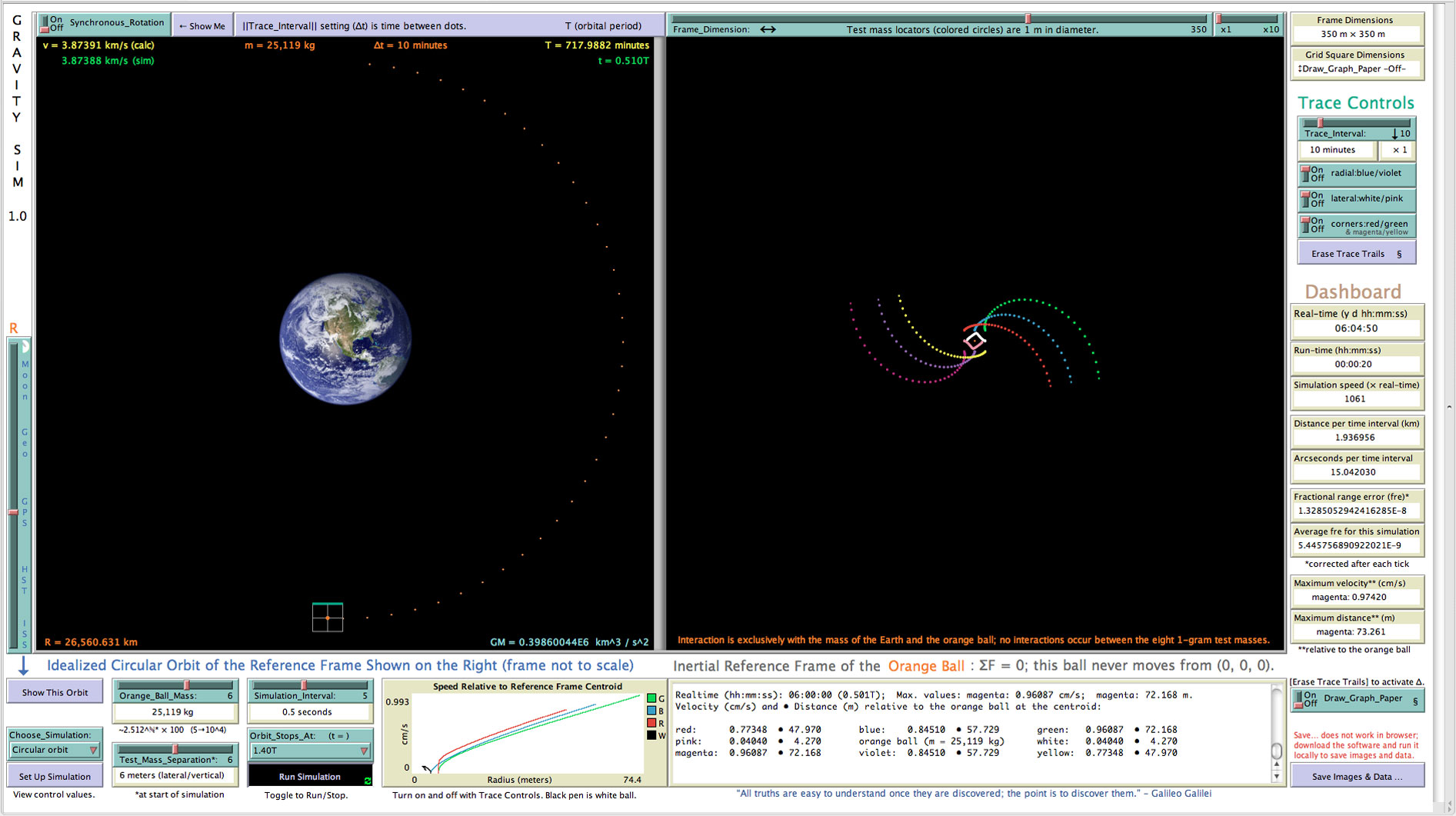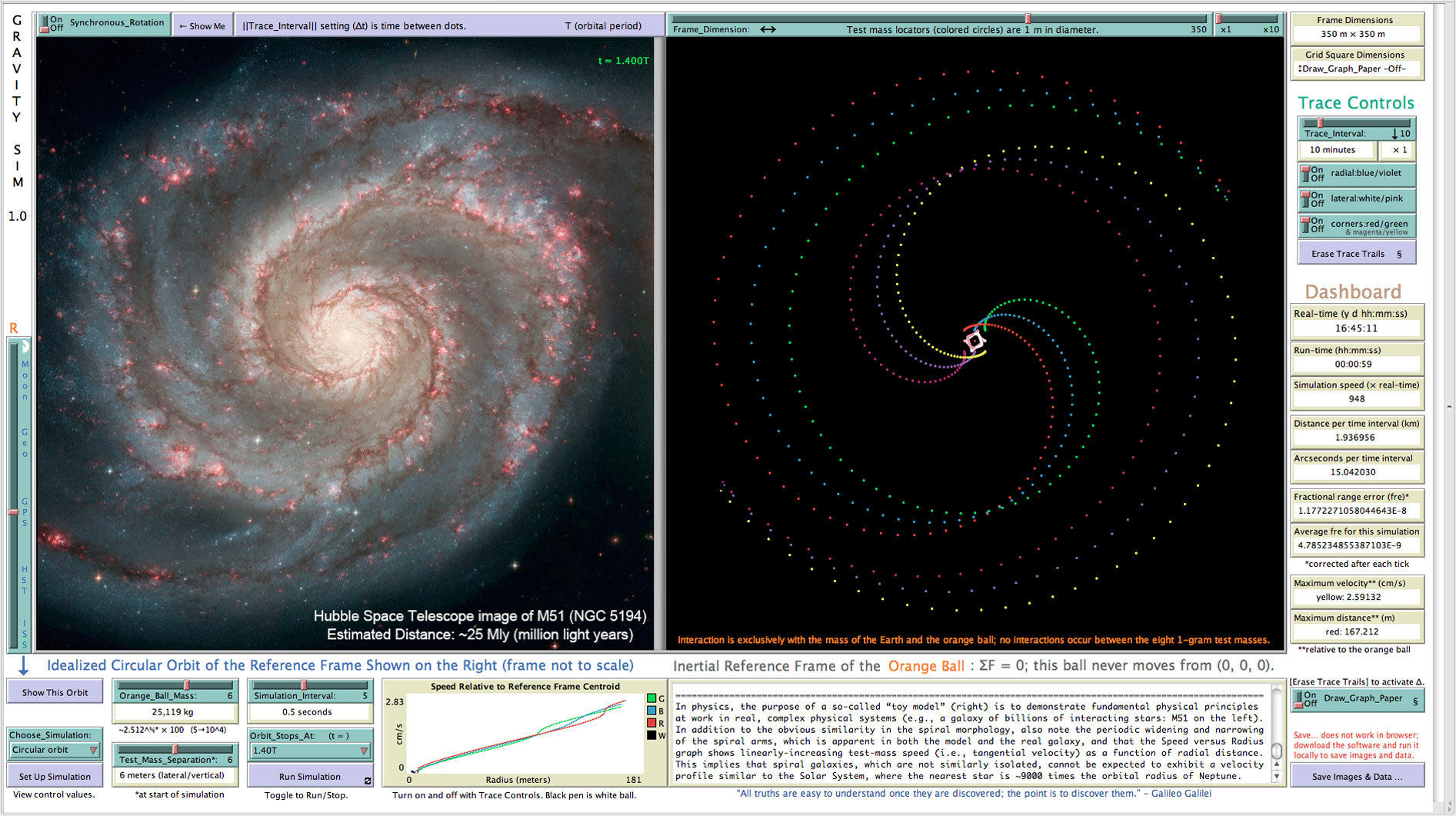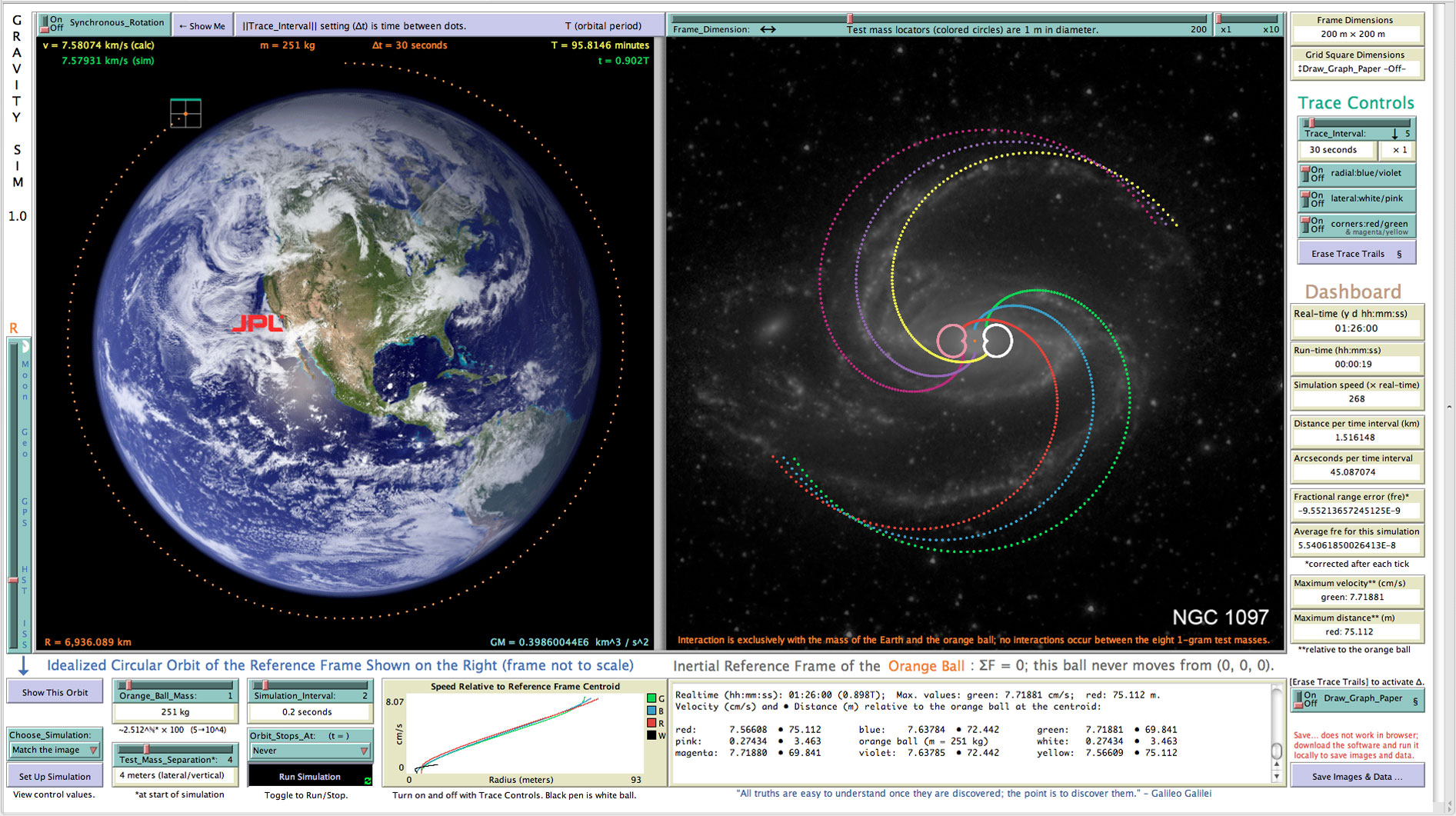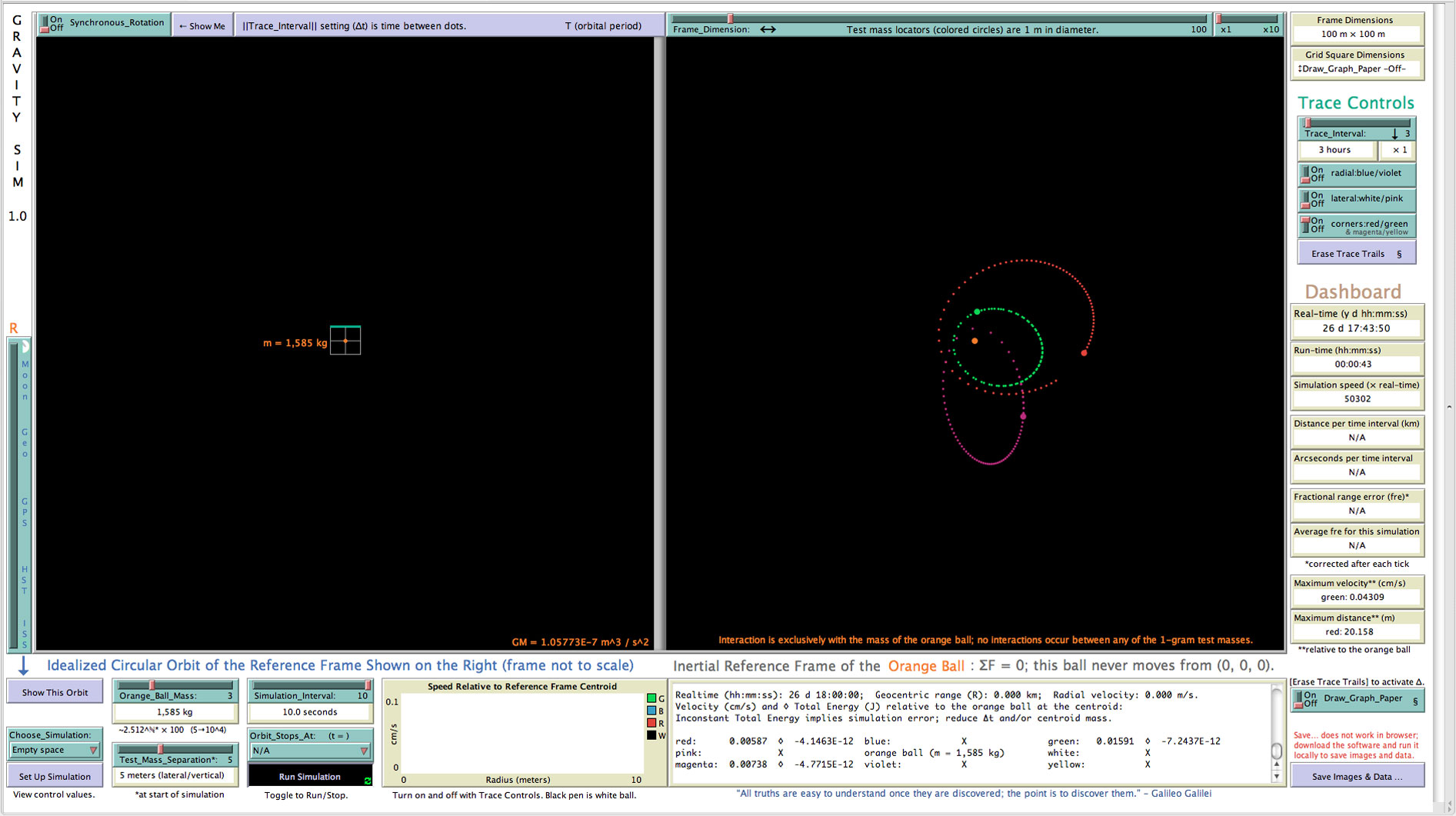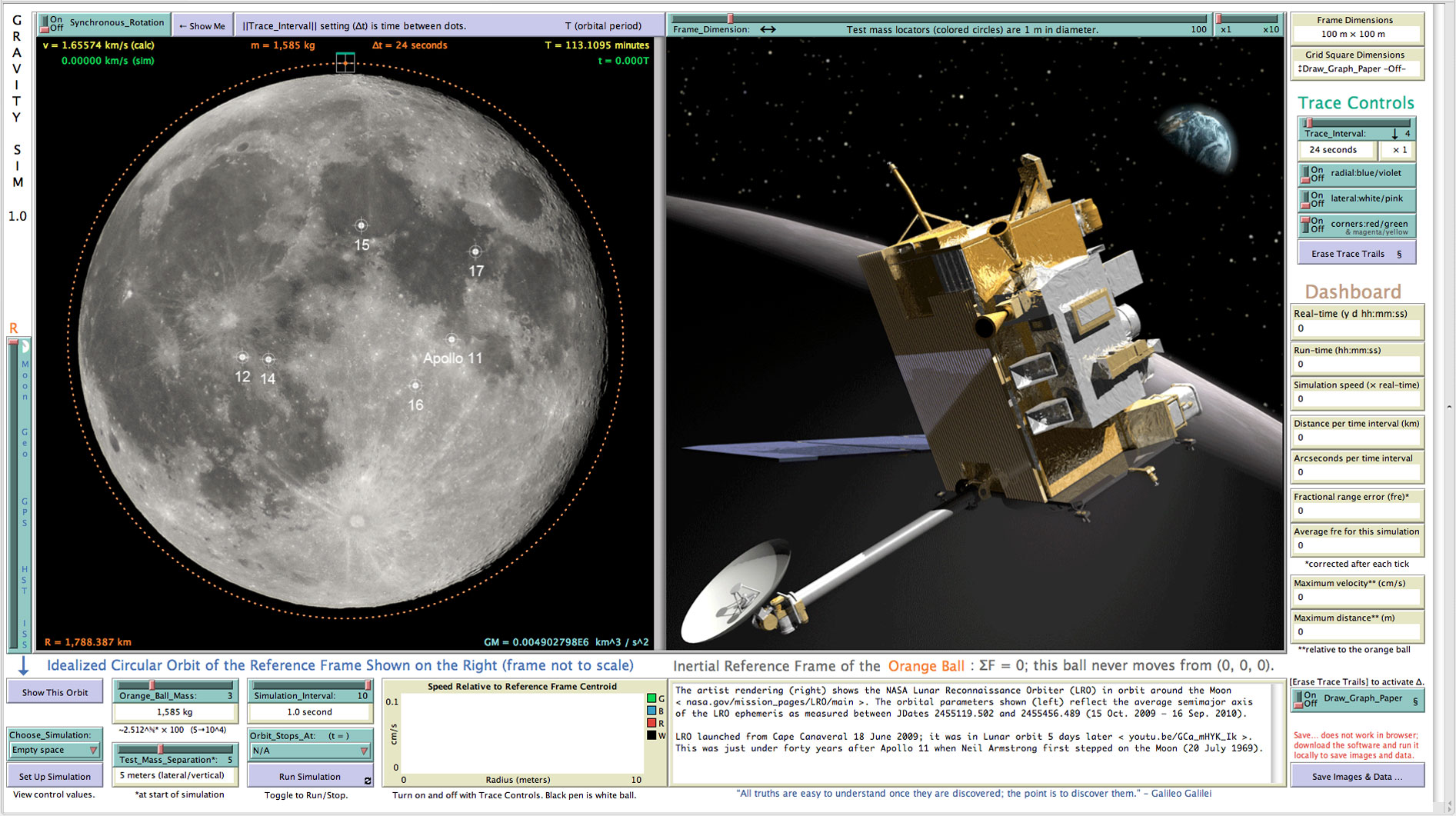Home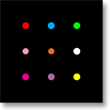
|
About
|
Docs |
Code
|
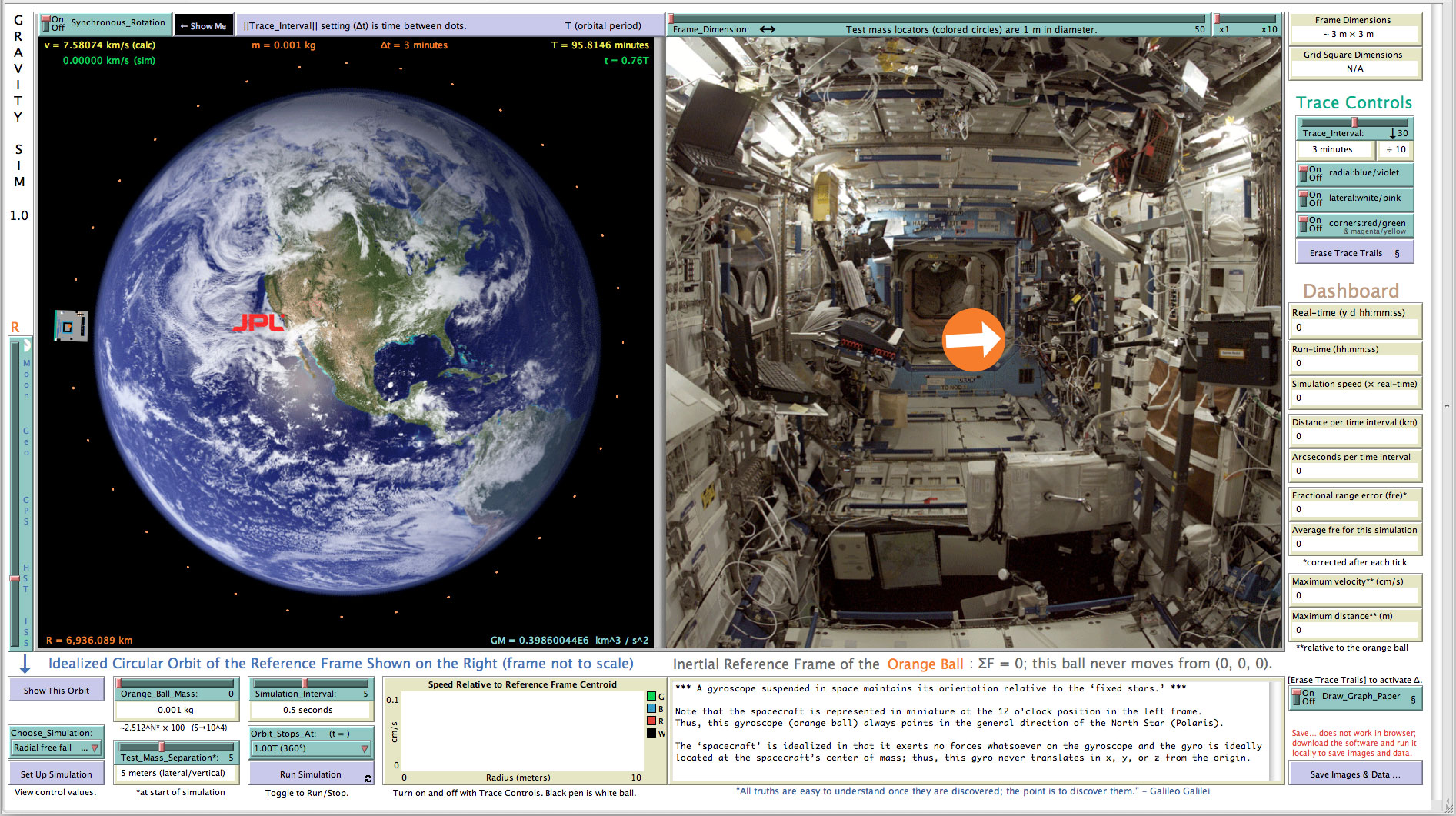
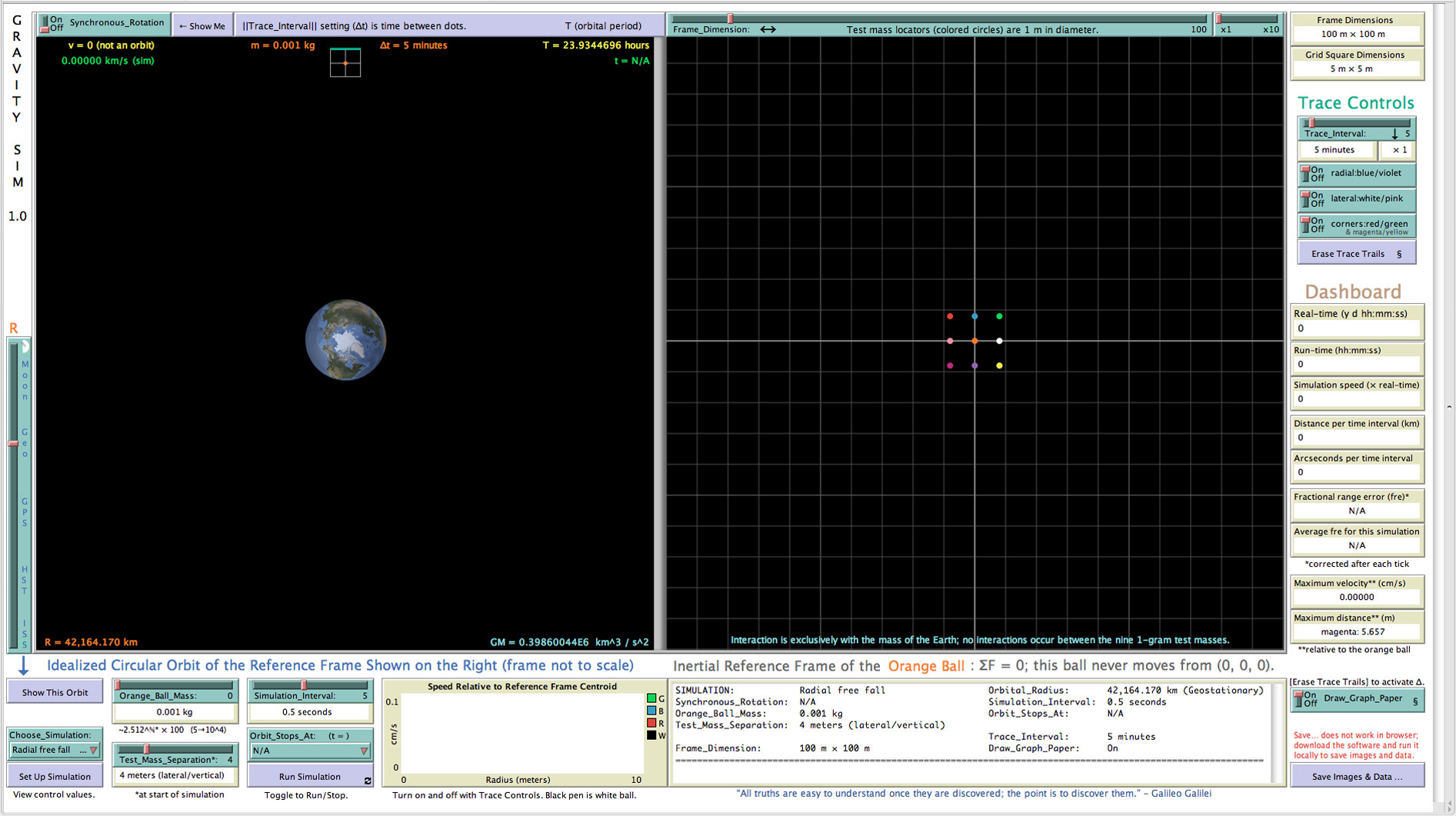
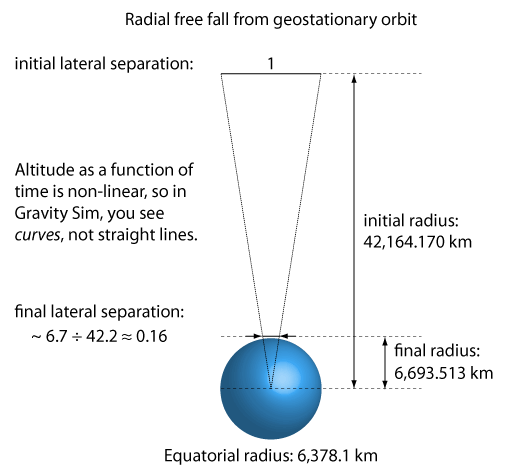
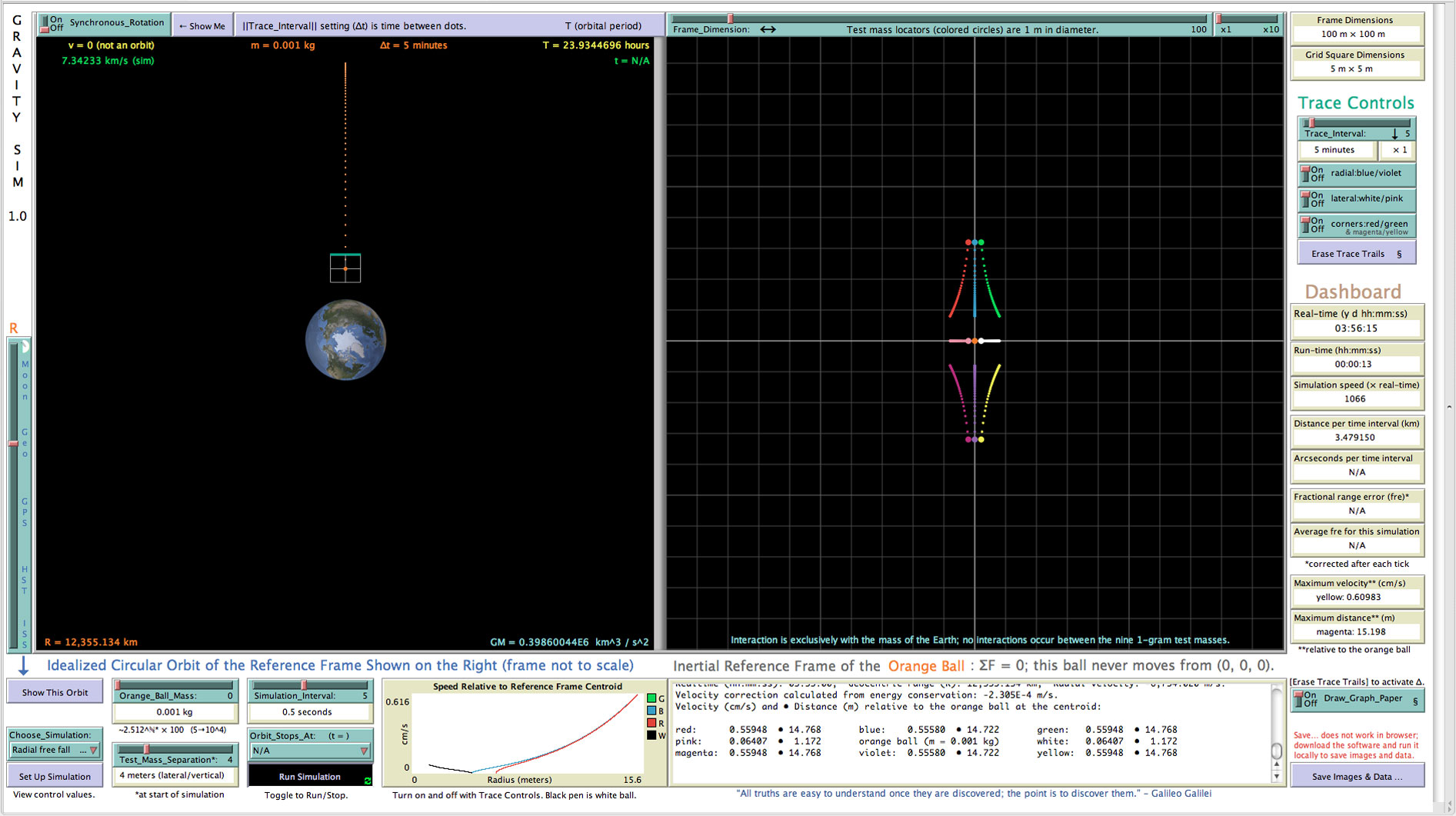
|
All Gravity Sim simulations are produced in a very simple way using the Euler method. Because the simulated reference-frame orbit is an idealized perfect circle (e = 0), intrinsic local error (error per step) is known, so the resulting minute position error of the reference-frame centroid can be corrected after each step. Consequently, the global error (error at a given time) in the position of the reference frame is always zero, which implies that the calculated accelerations on the test masses are equally accurate throughout a simulation. Because of the foregoing methodology, the simulated dynamical behavior of the test masses over time (right frame) is extremely accurate. Gravity Sim employs double-precision (64-bit) floating point numbers as defined in the IEEE 754 standard (binary64), which allows for approximately 16 decimal digits of calculation precision. If it is not legible on your screen, the message in orange at the bottom of the right frame (4, 5, 6) states: “Interaction is exclusively with the mass of the Earth and the orange ball [at the reference-frame centroid]; no interactions occur between the eight 1-gram test masses.” | |
